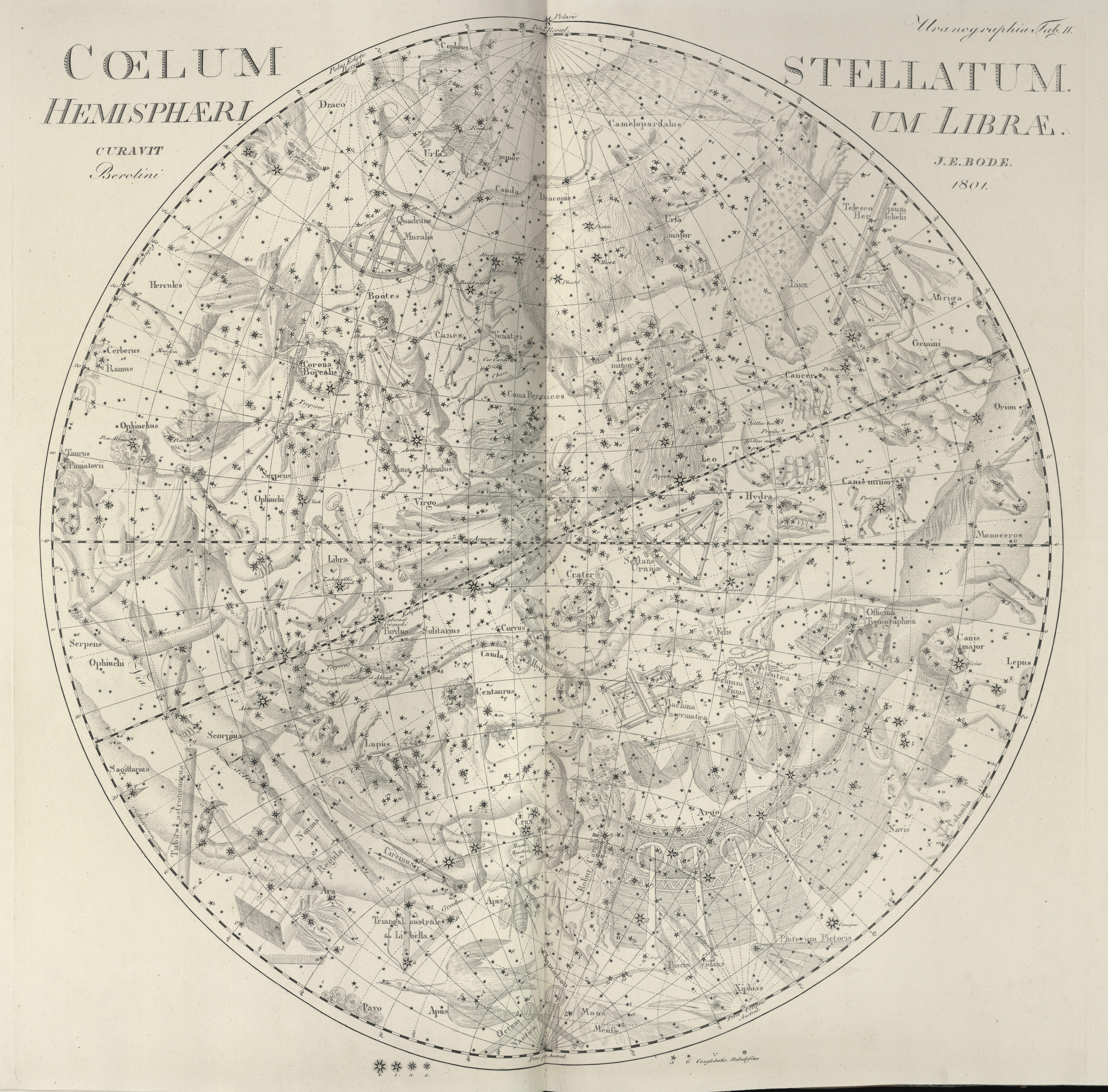Uranographia Tab II. Stellatum Hemisphaeri um Librae.
Bode included two planisphere plates. They are not southern and northern hemispheres; each one has Polaris at the top and the south pole at the bottom. Each one is centered upon an equinox point (where the ecliptic or path of the Sun and the celestial equator intersect). The March equinox point was in Aries in antiquity; by Bode’s time, due to the precession of the equinoxes, it had shifted to Pisces. The September equinox point was in Libra in antiquity; by Bode’s time it had shifted to Virgo. Bode titled the plates as the Aries and Libra planispheres.
The Libra planisphere, centered on the September equinox in Virgo, includes these constellations, among others, which appear high overhead in the night skies of spring:
Equatorial: Ophiuchus, Serpens, Libra, Virgo, Crater, Corvis, Hydra, Sextans, Leo, Cancer, Monoceros.
Northern: Hercules, Quadrans Muralis, Bootes, Canes Venatici, Ursa Major, Telescopium Herschelii, Gemini, Lynx, Ursa Minor.
Southern: Scorpius, Tubus Astronomicus, Lupus, Centaurus, Apis, Chameleon, Crux, Argo Navis, Robur Caroli II, Circinus (sector compass), Canis Major, Pixis Nautica (magnetic compass), Machina Pneumatica (air pump), Officina Typographica (printing press).
In September, the Libra-Virgo equinox (the center of the Libra plate) is traveling with the Sun, rising in the east in the morning and setting in the west in the evening. Imagine the center of the planisphere has the Sun pinned to it for that day, and that’s how it would move across the sky. Therefore the constellations near the center of this planisphere are invisible in the daytime sky at that time unless there is a solar eclipse. They would be visible directly opposite the Sun at the March equinox.






